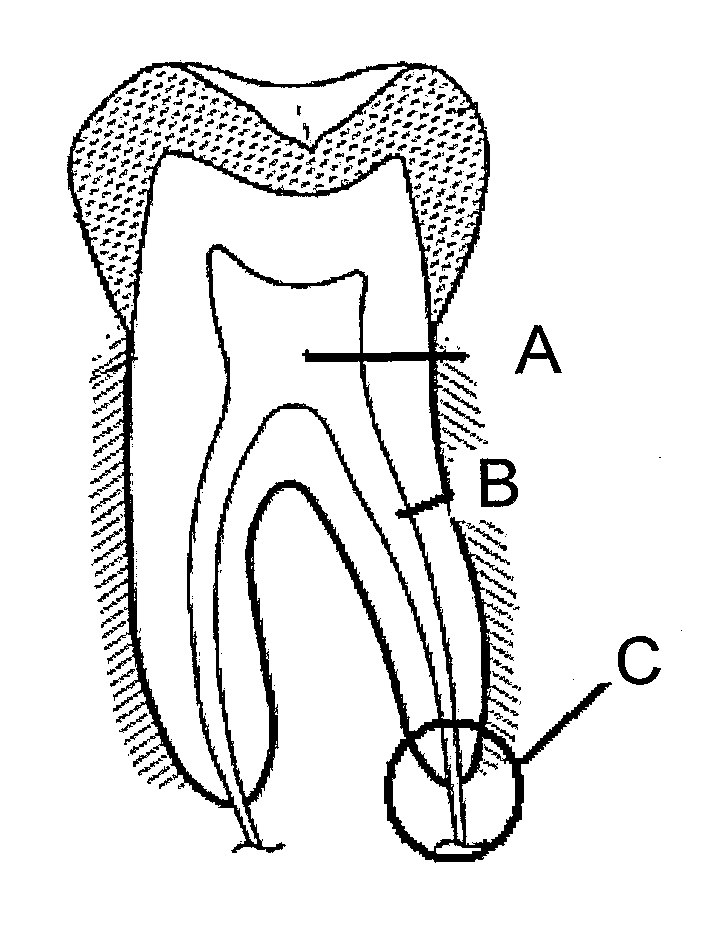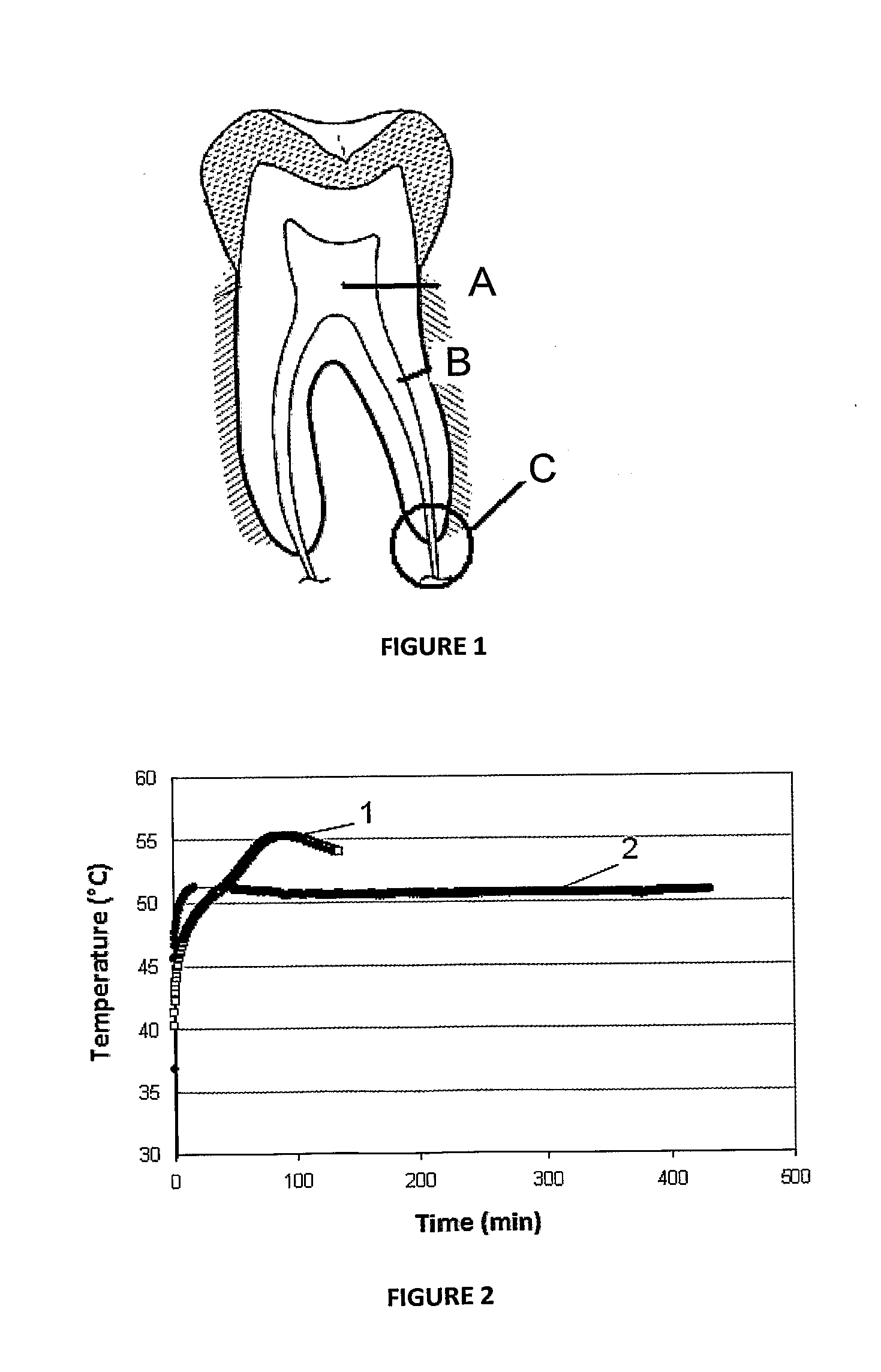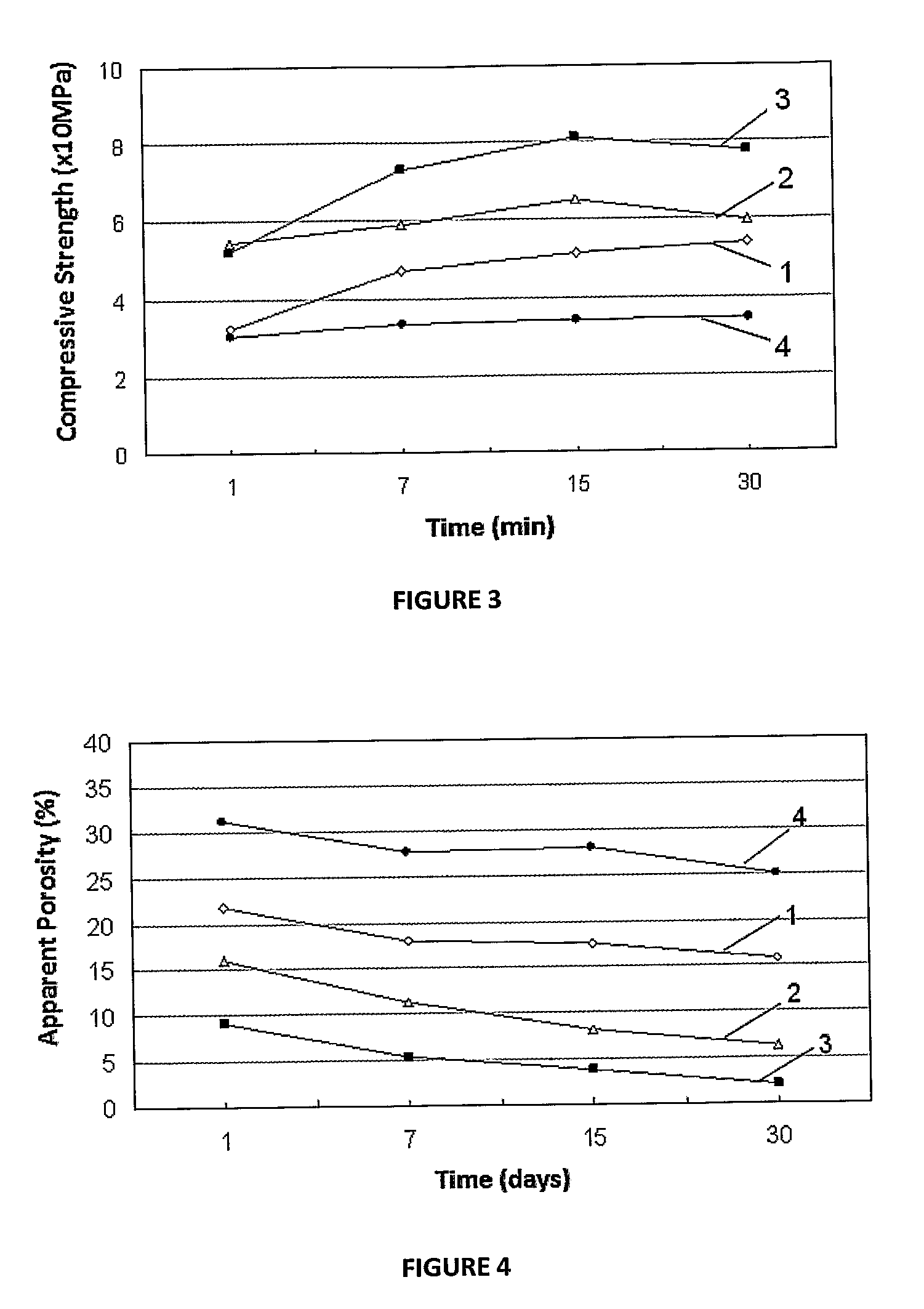Aluminous cement-based composition for application in endodontics and cementitious product obtained thereof
a technology of cement-based composition and endodontics, which is applied in the field of cement-based compositions, can solve the problems of inability to repair the pathological or iatrogenic defects of endodontic structures, low purity of such materials, and limited utilization, so as to improve workability, improve the effect of rheology and reduce water consumption
- Summary
- Abstract
- Description
- Claims
- Application Information
AI Technical Summary
Benefits of technology
Problems solved by technology
Method used
Image
Examples
example 1
[0070]Manipulation tests consisted of powder mixture of different types of material, one at a time, with water on a glass plate to determine visually the water-to-cement ratio (grams of water per gram of cement) necessary to obtain a homogeneous paste with ideal viscosity for placement. These tests were also conducted in the presence of various additives to verify their influence on the paste viscosity as well as on the water consumption. The water / cement ratio obtained for CAC was preferentially 0.32, although such ratio was reduced preferentially to 0.21 after additives incorporation.
example 2
[0071]The temperature tests consisted of measuring the heat released by cement paste as a function of time, which supply important information about reaction kinetic. The temperature evolution of hydraulic binder pastes can be registered with the help of a thermocouple and used as a measure of the hydration of cements. This sensor was inserted into the plain cement suspensions (water / cement=1.5) and the measurements were thereafter initiated. A capture system (ESA 9800, Matec Applied Sciences-UK) was connected to the thermocouple to record data automatically. Hydration kinetic of cement is thereby measured provided this reaction, responsible for cement hardening, is followed by temperature rising. Suspensions were kept at 50° C. during the heat evolution measurements, because it provides a faster hydration process than at room temperature. In this way, CAC presented a setting time significantly lower than that of MTA.
[0072]The following Table 1 compiles temperature data against time...
example 3
[0073]The characterization of alkalinity was carried out by pH and ionic conductivity tests of the proposed endodontic materials. The pH measurements of aqueous solutions were taken at the end of setting time. At the same time, the ionic conductivity was measured and correlated to calcium ions dissociation.
[0074]Aqueous suspensions of the different types of cements (water / cement=0.35) were prepared and cast into 20 mm diameter×20 mm height cylinder molds. These samples were cured at 50° C. during 24 hours, dried at 110° C. for 72 hours and added to a container with water (80 mL). Sensors connected to an automatic data capture system (ESA 9800, Matec Applied Sciences-UK) were inserted into water and the pH and ionic conductivity measurements as a function of time were immediately initiated. Container was adapted to allow the temperature control during measurements at 30° C.
[0075]CAC presented anti-bacterial properties in function of such pH development, similar to that of MTA.
[0076]T...
PUM
| Property | Measurement | Unit |
|---|---|---|
| setting time | aaaaa | aaaaa |
| ionic conductivity | aaaaa | aaaaa |
| pH | aaaaa | aaaaa |
Abstract
Description
Claims
Application Information
 Login to View More
Login to View More - R&D
- Intellectual Property
- Life Sciences
- Materials
- Tech Scout
- Unparalleled Data Quality
- Higher Quality Content
- 60% Fewer Hallucinations
Browse by: Latest US Patents, China's latest patents, Technical Efficacy Thesaurus, Application Domain, Technology Topic, Popular Technical Reports.
© 2025 PatSnap. All rights reserved.Legal|Privacy policy|Modern Slavery Act Transparency Statement|Sitemap|About US| Contact US: help@patsnap.com



